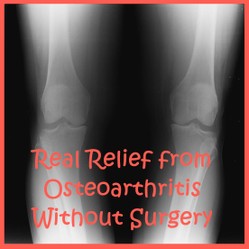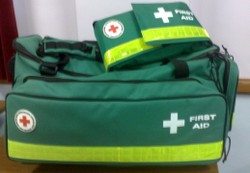
Aneurysm
by health
The symptoms of an aneurysm naturally vary with its size and position, and may be complicated by other manifestations of arterial disease.
An aneurysm is a dilatation upon an artery which is caused by weakening of the arterial wall, combined with increase in the arterial pressure due to arterio-sclerosis.
The blood-vessels are continually subjected to a considerable pressure, which rises with each heart contraction, but, owing to the natural resilience and elasticity of the arteries, this pressure is more or less equally distributed, and does not give rise to shocks or jars. With advancing years the arteries lose their elasticity, but there is a corresponding diminution of vigor, and consequently the vessels seldom give way.
Should, however, degeneration occur in the arteries at a comparatively early age as a result of such diseases as alcoholism, syphilis, and gout, when the heart is still vigorous and hard work is being performed, an artery is liable to become dilated, to give way, that is, to develop an aneurysm.
Accordingly aneurysm tends to occur in the active period of life, between the ages of thirty and fifty, in men who follow arduous occupations, as navvies and dock labourers, and who suffer from degenerate arteries. Syphilis plays an important part in the production of aneurysm, which is seldom seen in women unless they have suffered from this disease.
Aneurysms are classified according to their shape; when the walls dilate uniformly, a "fusiform" or "tubular" aneurysm is described (mainly met with in the arch of the aorta); when a limited area of the wall is weakened a pouch or sac is formed, and it is called a "sacculated" aneurysm (mainly found in medium-sized arteries, and has a tendency to rupture) ; when blood tears its way amongst the coats of an artery it is known as a "dissecting" aneurysm, and when a tiny dilation the size of a millet seed appears on the side of a small artery (often in the brain), it is termed a "miliary" aneurysm. Cerebral hemorrhage or apoplexy is commonly caused by the rupture of such an aneurysm.
Symptoms of Aneurysms
The symptoms of an aneurysm naturally vary with its size and position, and may be complicated by other manifestations of arterial disease.
The essential feature is the presence in the line of an artery of a globular swelling which pulsates in an expansile manner with each beat of the heart. An aneurysm gives rise to symptoms mainly as a result of pressure exerted on surrounding structures which usually become adherent to it. Pain, disturbances of sensation, paralysis, may follow pressure on nerves.
The sternum and vertebral column may be eroded from continuous pressure. Adjacent veins may be pressed on and cause congestion and dropsy of the parts beyond. Difficulty in swallowing, breathlessness, and a barking irritating cough may be produced by the pressure on the gullet, wind-pipe, and laryngeal nerve by an aneurysm of the thoracic aorta.
Other evidences of aneurysm include inequality of pupils, differences of pulses, and peculiar murmurs; these signs can only be detected by the trained observer.
Aneurysm must always be regarded as a grave condition. It is liable to progress towards a rupture, when a profuse hemorrhage causes sudden death.
The pressure on vital organs is a serious complication, and it should always be realized that aneurysm, in most cases, is evidence of extensive disease of the arteries, so that the outlook is generally unfavorable.
Treatment of Aneurysms
In the treatment of aneurysm, the main indication is to initiate the natural method of cure by means of a laminated clot, which gradually increases till it fills the sac, and prevents further growth or rupture. To this end measures must be taken to reduce the arterial tension and to diminish the force of the heart's action.
Rest in bed, free from anxiety and worry, with a dry, spare, non-stimulating diet, gradually reduced to the minimum necessary to maintain nutrition, with saline purges, are the main constitutional methods of treatment. Failure of such treatment necessitates local surgical interference. Where anatomically possible the artery may be ligated, usually proximally (i.e. at the end of the aneurysm nearest the heart), with the object of promoting clotting.
You might also like
Painfree Arthritic Knees Without SurgeryAPOS therapy saved my life. I was on a fast downhill spin into disability, se...
First Aid: Would you Know What to Do?A medical emergency could happen at any moment. The question is whether you h...
Bug-Out BagsBug-out bags contain items necessary in the event a quick getaway is needed d...







 Your rash and itching problems may be Scabieson 03/10/2013
Your rash and itching problems may be Scabieson 03/10/2013
 Tickson 11/06/2011
Tickson 11/06/2011
 Vitamin Kon 10/10/2011
Vitamin Kon 10/10/2011
 Vitamin Eon 10/10/2011
Vitamin Eon 10/10/2011




Comments